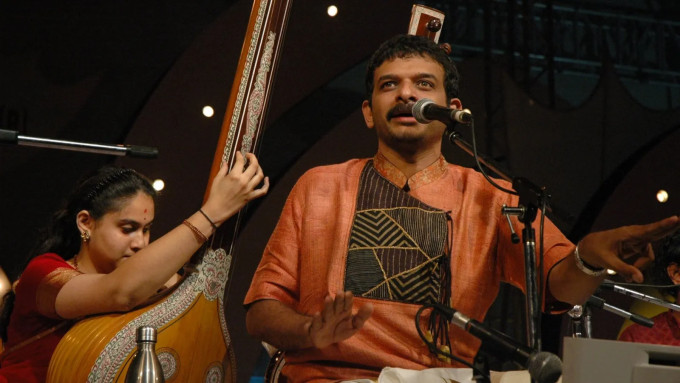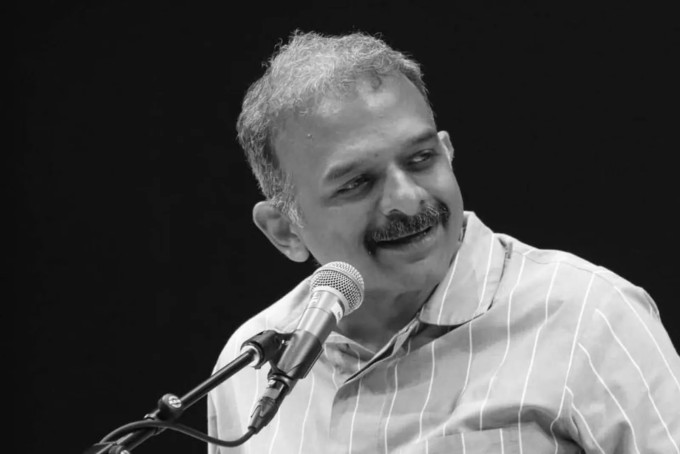‘South Indian voices must resound across Delhi’: Carnatic music maestro TM Krishna on breaking norms, artistic freedom and more
Known in equal measures for his impact on Indian classical music and his activism, T M Krishna––a Ramon Magsaysay Awardee-–has challenged and redefined the boundaries of Carnatic music. His willingness to address social issues through his art has made him an admirable and controversial figure in the industry. He has confronted issues of casteism, elitism, and political engagement in music.
Ahead of his performance at the South Side Story music festival in Delhi (August 31-September 1), which has an eclectic lineup––Khatija Rahman and Band, Sean Roldan & Friends, Sithara Project Malabaricus, Agam The Band, Nithya Mammen, All Okay, Maalavika Sundar, Job Kurian, Arivu + The Ambasa Band, and Thaikkudam Bridge––indianexpress.com caught up with Krishna and picked his brains on breaking norms in Carnatic music, subversion of art, political engagement by artists, artistic freedom, and much more. Read the edited excerpts below:

Q: Delhiites are eagerly awaiting your performance at South Side Story music festival. What is your view on the festival ?
Krishna: I don’t think Delhi and its environs hear enough from the South, which is why this festival is very important. Naming Delhi roads after Thyagaraja and Bharatiyar is not enough. What’s truly important is that the voices, tunes, songs, dances, and music of the South are heard loudly and clearly across “New Delhi”.
Q: Could you talk about the evolution of Carnatic music through the years? You have broken a lot of class and caste norms and their influence on the genre.
Krishna: Art forms across the world, including in India, have historically been associated with elitism, often intertwined with issues like classism, casteism, and gender discrimination. This is not unique to India; similar patterns of exclusivity and discrimination exist in Western classical music and other cultural practices globally. The core issue lies in the human tendency to seek exclusivity and a sense of superiority.
In India, particularly in the realm of classical music like Carnatic, this elitism is deeply rooted. As someone born into privilege––an upper-caste Brahmin man, English-speaking, and well-to-do––I initially didn’t question this system. However, over time, I realised that classical music in India perpetuates exclusivity, making it difficult for people from diverse backgrounds to succeed.
 “What’s truly important is that the voices, tunes, songs, dances, and music of the South are heard loudly and clearly across “New Delhi”,” says T M Krishna.
“What’s truly important is that the voices, tunes, songs, dances, and music of the South are heard loudly and clearly across “New Delhi”,” says T M Krishna.
Diversity isn’t achieved by merely token inclusion; it requires acknowledging and addressing the struggles faced by marginalised communities. The world of Carnatic music must recognise its exclusivity and open up to diverse voices, both in content and participation. True artistic expression requires a collision of different perspectives and voices, creating a more representative and enriched cultural experience. This philosophy shapes how I approach and envision the future of art, ensuring it reflects the complexity and diversity of our world.
Q: How do you tackle the opposition you receive when you break norms, such as singing compositions based on poems by Narayana Guru and Periyar?
Krishna: Taking an unconventional path naturally brings resistance, which is a normal part of challenging the status quo. I’ve learned that both the person making the change and those resisting it experience discomfort. Initially, I struggled with this, finding it hard to adjust to my new direction. While differing viewpoints are acceptable, personal attacks and gaslighting are not. These actions not only affect the individual but also their loved ones, and the consequences can be severe. It’s especially hard when those close to me suffer due to my choices.
 Music offers a unique way to reflect on oneself, and embracing its beauty can inspire artists to become more vocal and inclusive in their work and teaching, he says. (Photo: Facebook)
Music offers a unique way to reflect on oneself, and embracing its beauty can inspire artists to become more vocal and inclusive in their work and teaching, he says. (Photo: Facebook)
Q: What’s your take on the role artists can play in politics and its impact, given that you have always been vocal on issues such as the CAA and against the ruling party?
Krishna: To say art is not political is a lie. Every act is political—where you sing, what you sing, how you sing, with whom you sing, what you don’t sing, what you don’t like listening to, whom you don’t like singing to, the language you prefer singing in, and the dialect that doesn’t sound good to your ear… art and music are fundamentally political acts.
While I believe all artists are participating in political discourse, expecting them to be overtly political isn’t realistic. However, art must align with values of equality, justice, and fraternity in a secular, diverse country like ours. If an artist sings about justice but supports or remains silent on violence, it creates a contradiction. Music offers a unique way to reflect on oneself, and embracing its beauty can inspire artists to become more vocal and inclusive in their work and teaching.
Q: Your take on subversion of art and culture and the current times
Krishna: Some outstanding artists, especially in non-English standup comedy, have managed to create subversive political art. Manjeet Sarkar is a phenomenal example, alongside musicians, rock artists, and visual and theatre artists who tackle hard-hitting issues. Mainstream cinema, particularly Bollywood, often falls short in being truly political; they have a lot to learn from Marathi, Malayalam, and Tamil cinema. I think Bollywood needs to learn something. Superstars who call themselves global stars should learn from the voices of Hollywood. They don’t seem to be learning at all. Mainstream cinema is problematic, I think. Despite excuses of budget concerns, marginalised artists––including Dalit and LGBTQ artists whose lives are at stake––are sticking their necks out and asking difficult questions. For someone like me with social privilege, to say I am going to lose money is disgusting.
Q: Can you share your thoughts on new age music such as those by Sean Roldan, Sid Sriram, Agam band, and the new age movement?
Krishna: When does something become “old age”? What matters is whether a musical form speaks to its times, regardless of being new, old, or ancient. Artists like Agam, Sean Roldan, Sid Sriram, and Arivu speak from their life experiences, from their hearts. That is important. The same goes for me; just because I sing “classical” doesn’t mean it holds extra value. As long as music speaks truthfully from the artist’s heart and experiences, and the artist remains open to correction, change, introspection, and reflection, it can be considered “new.”
 Film music is arguably the most dynamic form of music because it isn’t bound by fixed aesthetic conditions, he says. (Photo: Facebook)
Film music is arguably the most dynamic form of music because it isn’t bound by fixed aesthetic conditions, he says. (Photo: Facebook)
Q: Your take on fusion and mash-ups
Krishna: The notion of any musical form being pure and independent––meaning it belongs exclusively to itself––is nonsense. All music is influenced by various sounds, cultures, and people, making it inherently fused. True fusion occurs when the influences become indistinguishable, creating something entirely new. While many contemporary artists still reveal their influences, a truly innovative musical form makes you forget where it originated. This reimagining takes time and effort, and though it’s rare, it’s worth striving for. I look forward to hearing a sound that represents this new, unidentifiable fusion.
Q: Your two cents on popularization of Carnatic music through film music
Krishna: I have a different take on this. Film music is arguably the most dynamic form of music because it isn’t bound by fixed aesthetic conditions. It evolves constantly, influenced by the story, characters, and the imagination of filmmakers. Unlike other music forms like hip hop or rap, which have set structures, film music moves in multiple directions, absorbing sounds and flavors from everywhere. This uniqueness makes it unparalleled. Despite being in music for 36 years, I haven’t seen a significant demographic shift in Carnatic music’s audience due to film music. Film music hasn’t created a new audience for Carnatic music; it simply piques curiosity.
Q: Could you talk about sticking to a form, artistic exploration options, and freedom in Carnatic music?
Krishna: The obsession with sticking to a form is misguided. Musical forms are meant to evolve, with each generation bringing something new. The idea of purity, whether in music or culture, is dangerous and stifles creativity. Carnatic music, like all music, has an aesthetic foundation, but what is built around it should be dynamic. There are no strict rules; freedom, exploration, and identity are key. The notion of protecting music as pure and unstained is deeply problematic and contrary to the spirit of creativity.
📣 For more lifestyle news, click here to join our WhatsApp Channel and also follow us on Instagram
Disclaimer: The copyright of this article belongs to the original author. Reposting this article is solely for the purpose of information dissemination and does not constitute any investment advice. If there is any infringement, please contact us immediately. We will make corrections or deletions as necessary. Thank you.
